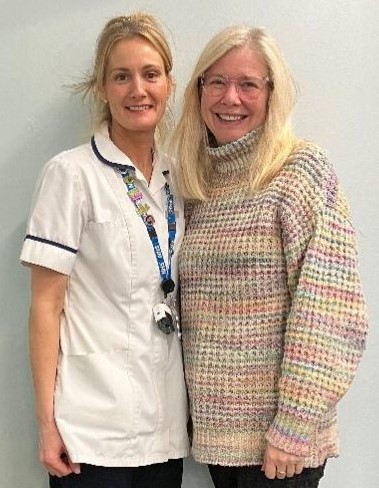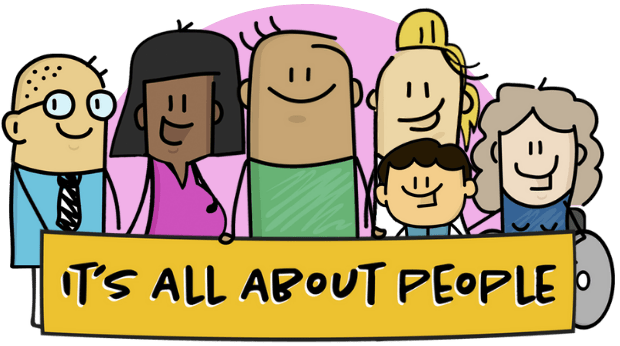Caring about care communication
A blog by Alison Wilkinson, Physiotherapist and It's All About People Champion.
This week, I had an experience that really made me pause and reflect.
In my 25 years as a physiotherapist, I haven’t come across this situation as often as I would have expected - I worked with a patient, Joanne, who has been deaf since birth.

Alison and Joanne
Communicating with Joanne required a shift in my usual approach.
While the referral paperwork let me know about her hearing impairment, it was our actual conversation that really opened my eyes to what she needed in order to be heard, and understood.
Thankfully, the referral process also allowed us to book a British Sign Language (BSL) interpreter for the session. So far, so good.
But during our appointment, Joanne told me something that stuck with me:
“Accessing healthcare support is just too difficult.”
That hit hard. And it made me ask myself, are we truly doing everything we can to support people with additional needs when they come in for appointments where important decisions about their care are being made?
Or, without realizing it, are we putting up barriers that make it harder for them to engage, understand, and feel confident in the process?
In some cases, people just give up trying. That’s heartbreaking. And avoidable.
Luckily, our interpreter was fantastic and helped me understand how to adapt my communication in a way that worked best for Joanne. Here’s what we did:
- I made sure to speak first, so Joanne could lip-read before I demonstrated anything.
- I stayed facing Joanne directly, while the interpreter stood behind me, signing what I was saying.
- I used visual aids and models to explain everything clearly and reinforce what we discussed.
On paper, this might sound simple. But in practice, it’s very different from my usual approach, where I typically talk and demonstrate at the same time.
For Joanne, though, I needed to slow down, do things differently, and make sure she could be an equal participant in the conversation about her care.
Joanne shared that in many of her past healthcare appointments, little consideration had been given to how she communicates. She often left those appointments unsure of what had been said or agreed on, which understandably caused a lot of anxiety about her treatment.
So, we worked together to come up with a plan.
Joanne took photos of the exercises with her phone to refer to later, and we discussed how she could contact me in a way that actually worked for her, since phone calls weren’t an option. And when you stop and think about it, a telephone conversation isn’t the best approach for a lot of people.
After I met with Joanne, I reached out to the United Lincolnshire Teaching Hospitals NHS Trust (ULHT) Patient Experience Team for more guidance on improving communication with the people I care for.
I also took another look at the ULHT Purple Communication Folder, a fantastic resource packed with advice on navigating communication challenges. I’d skimmed it before, but now I’ve gone through it properly and encouraged my team to do the same.
Meeting Joanne was a reminder that great care isn’t just about what we do - it’s about how we connect.
And that sometimes, a small change in approach can make a world of difference.







